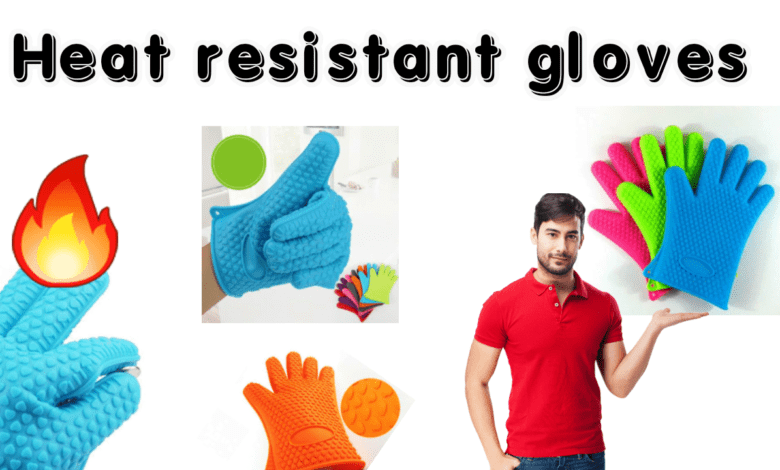
silicone heat resistant gloves
Over time, baseball and softball glove laces can become stretched, damaged, or even break.silicone heat resistant gloves
Stretched laces create larger and larger gaps between the fingers of the glove.
Fixing Your Softball Glove Laces
Laces that are too loose, can, over time, actually result in deformation of the glove’s shape. Very large gaps can actually be dangerous as hard line drives can sometimes get through one of these gaps and can injure the player.
Occassionally tightening your laces throughout the season will keep your glove in its original shape. You may even have laces become damaged or actually break. When that happens, you’ll need to replace it.
Steps to replace glove laces:
1. Use glove oil or leather softener to treat the new rawhide lacing. This will soften the leather and make it easier to handle as you repair your glove.
2. Make careful note of the stitching pattern of the lace area you are replacing.
3. Remove one section of the broken lacing at a time, using scissors if required.
4. Tie a tight overhand knot at one end of the new lacing, and using a leather awl or other pointy tool, push the lacing through the first hole of the stitching pattern. Pull the lacing through all the way to the knot.
5. Continue threading the lacing through the holes, replicating the glove’s original lacing pattern. Make sure the lacing is pulled as tight as possible without deforming the glove. In time, the new lacing will stretch a bit.
6. Make another overhand knot at the end of the section. Adjust the knot snugly against the glove, and cut off any excess lacing close to knot.
7. Repeat these steps for the other sections needing repair.
Keeping your glove in good repair will extend its life and maintain its playing performance, helping you play at your best season after season.
Protective Glove Selection Can Be Complicated
Many millions of dollars a year are spent on buying chemical protective gloves to use as personal protective equipment.
Gloves are available in a wide selection of natural and synthetic materials and range in price from a few cents to as high as seventy five dollars a pair.
Each glove has its purpose and employers need to know how to select the best chemical protective gloves to withstand exposure to chemical agents and protect the wearer.
All liquids, solids, gases, vapors, aerosols, fumes, dusts and fibers are chemical agents.
They are classified as chemical agents to differentiate them from biological agents, such as micro-organisms and physical agents, such as noise, vibration and friction.
The law requires that employers make a suitable and sufficient assessment of the risks to health from exposure to chemical agents at work and to do everything possible to protect the worker. This is covered by many of health and safety legislation such as OHSA.
If it can be clearly shown that:
1) There are situations at work where risks to health and safety are unavoidable
2) Methods of control other than protective gloves are not reasonably practicable
3) Employers have further legal duties to provide suitable protective gloves to any employee who may be exposed to such risk.
4) Any protective gloves provided must be manufactured to the appropriate standard and marked.
5) The gloves must also be compatible with the wearer, the work to be done, and any other PPE to be worn, such as aprons, overalls or shoes.
6) Chemical resistance of protective gloves
Protective gloves are available in a wide range of natural and synthetic materials. However, there is no single glove
material or even combination of glove materials able to provide unlimited resistance to any individual and also the combination of chemical agents.
There are three ways in which any protective glove will, at some stage, fail to protect the wearer from exposure to any chemical agent and these are:
Permeation – the process by which a chemical agent migrates through the protective glove at a molecular level;
Penetration
– the bulk flow of a chemical agent through closures, porous materials, seams and pinholes or other imperfections in the protective glove;
Degradation – a damaging change in one or more physical properties of the protective glove as a result of exposure to a chemical agent.
The selection of suitable protective gloves can be a complicated procedure and the degree of protection they give is not always easy to establish.
When choosing gloves, always seek expert help from the manufacturer or your distributor of the chemical agent or glove.
They are best placed to provide you with glove performance test data which can be used to assist in predicting the permeation,
penetration and degradation of specific glove materials by specific chemical agents. Also look to the MSDS sheets for guidance.
There are four requirements which must be met for any protective glove selected to be suitable. The glove must perform the following:
1) Be appropriate for the risk(s) and the conditions where it is used
2) Take into account the ergonomic requirements and state of health of the person wearing it;
3) Fit the wearer correctly, if necessary, after adjustments;
4) Either prevent or control the risk involved without increasing the overall risk.
Proper selection should therefore take into consideration the wearer, the workplace conditions and the protective glove.
Employees need to be trained in the correct way to put on, wear and then take off protective gloves to ensure maximum protection. There should be adequate facilities for disposal of contaminated protective gloves.
If protective gloves are selected or worn incorrectly there is every possibility that this may increase the wearer’s overall risk to health because:
Contaminants may get inside the glove to reside permanently against the skin which could cause greater exposure than if a glove had not been worn at all_ Wearing a glove for extended periods can lead to the development of excessive moisture, such as sweat,
on the skin which in itself will act as a skin irritant_ Wearing gloves manufactured in natural rubber or latex can cause an allergenic reaction in certain individuals.
Selecting protective gloves must be part of an overall health and safety risk assessment for the job to be done. Remember gloves only protect the wearer; they do not remove the contaminant from the workplace environment.
Some types of glove are inconvenient and interfere with the way people work and may cause another danger. Wearing gloves interferes with the wearer’s sense of touch.
If protective gloves are used incorrectly, or are badly maintained, the wearer may receive no protection at all.
The importance of using a glove material depends on the extent of exposure. For chemical groups such as strong acids, there maybe only one choice of glove material. Whereas, a range of materials may be suitable for other weak acids.
Where there is a choice of glove material, the extent of exposure to the chemical agent and how it is handled. Factors such as controlled pour or splashing will determine the best selection of the glove.
Where there is a choice, price can also be a significant factor in choosing a particular glove. Consideration also needs to be addressed in the removal of the glove.
If the task requires the wearer to take the gloves off their hands repeatedly, the gloves either need to be washed thoroughly or disposed of. Reusing contaminated gloves will provide little or no protection.
A good idea if there are many types of chemicals requiring different glove materials, is to color code the chemicals and the bin where the gloves are stored. Any employee will know the red dot on the bottle, requires gloves from the red bin.
Glove selection seems to be an easy task, but in dealing with different chemical compounds the selection in the right glove can be complex.
Consult with your suppliers in the chemicals and even your suppliers in safety equipment for the best advice. The MSDS will also be an excellent source of information in the chemical handling and hazards.
heat resistant gloves for cooking,thin heat resistant gloves for cooking,heat resistant gloves 500 degrees,heat resistant gloves laboratory,heat resistant gloves for oven,heat resistant gloves for grilling,best heat resistant gloves for cooking,silicone gloves,






